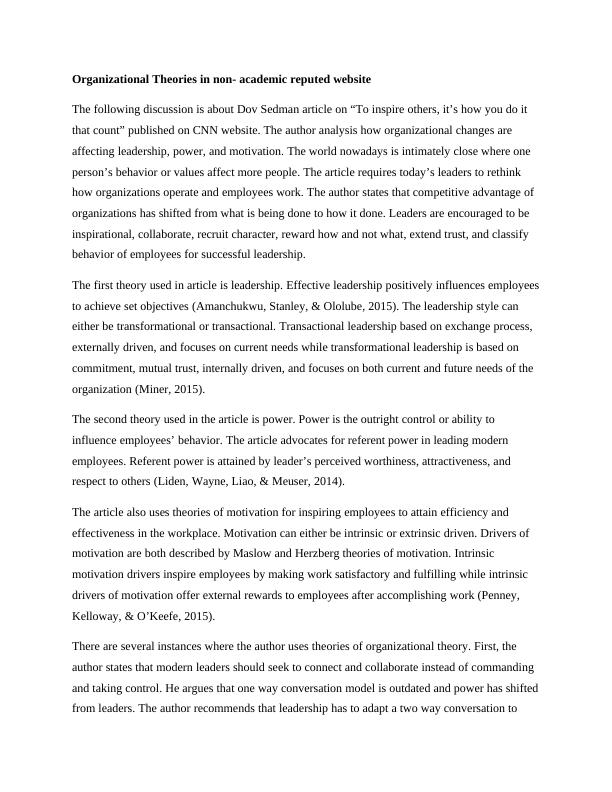Organizational Theories in Non- Academic Reputed Website
4 Pages758 Words13 Views
Added on 2021-06-15
Organizational Theories in Non- Academic Reputed Website
Added on 2021-06-15
ShareRelated Documents
End of preview
Want to access all the pages? Upload your documents or become a member.
Understanding and Leading Change
|12
|606
|62
Essay on Supporting Transformational Leadership Theory
|5
|3033
|720
Paper on Transactional and Transformational Leadership
|5
|1149
|47
Leadership and Management Theories in Dangote Cement Group
|28
|7034
|103
Leadership Skills - Assignment
|18
|3805
|48
Integrative Review of Leadership & Motivation
|8
|1946
|76


